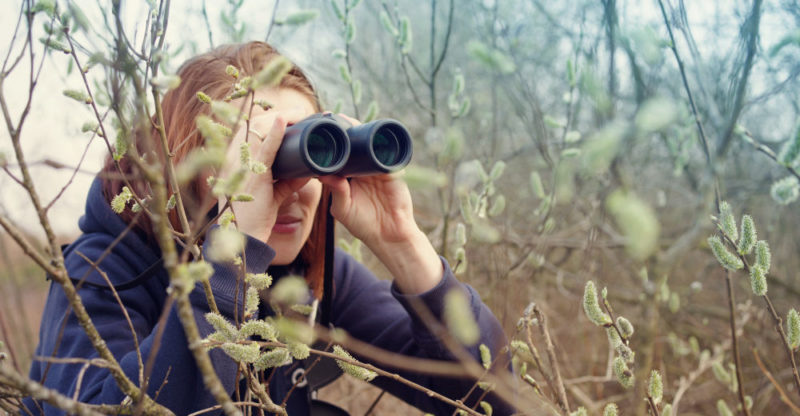We explain what observation is, what its objective is and the methods it uses. In addition, its general characteristics and the types that exist.
What is observation?
Observation is the ability of the human being to look attentively and to distinguish an object, a person or a situation, through the sense of sight . It is one of the methods of perception and capture of information about the world that surrounds the individual.
It involves a reasoning process through sensory information received by sight and which is influenced or affected by sensory information from the other senses : hearing, smell, taste and touch .
For example: If a small cloud of smoke is observed that comes from a nearby house, it can be assumed that it is a controlled smoke. On the other hand, if shouting and sirens are heard when observing the smoke, it can be decoded that it is an emergency.
Observation is also a method used in scientific research to study certain phenomena. Through observation during a certain period of time, verifiable data and information are obtained. The scientific observation may require research tools such as a microscope to observe cells or a telescope to observe the stars of the sky.
Observation characteristics

Among the main characteristics of the observation, the following stand out:
- It is a human capacity that works through the sense of sight .
- It is a human capacity that is conditioned by the perspective and previous knowledge of the observer.
- It is a method of perception that allows information to be obtained from the world.
- It can be done directly by the attentive gaze of an individual or through tools , such as lenses, machinery, computers, microscopes or telescopes.
- It can occur casually without the intention of observing or it can occur intentionally based on a series of structured steps to learn about an object or phenomenon and study it.
Observation types
The general types or methodologies of observation can be:
- Scientific or structured observation . It is a type of observation that is based on a methodology and a specific procedure to analyze and investigate a matter. It may require the use of observation and analysis instruments and tools.
- Semi-structured observation. It is a type of observation that implies prior planning or intention to investigate, but is based only on observation without intervening in the object or phenomenon of study.
- Simple or unstructured observation. It is a type of observation that arises without a premeditated objective or a specific preparation, that is, it occurs without an intention and in a random way, although some data or information is always obtained regarding what is observed.
Scientific method

The scientific method is one of the research procedures that is based on observation to obtain quantifiable and verifiable information about an object of study.
It requires the elaboration of a previous hypothesis that will give reason to the experimental investigation. The hypothesis will allow defining a structure or series of steps to follow for experimentation through observation.
The registration of the steps applied to scientific observation is useful so that the process can be repeated , to corroborate the veracity of the data obtained or to modify any of the instances if necessary.
It may require the use of observational instruments and tools that allow obtaining qualitative (that is, descriptive) and quantitative analytical data that are assigned numerical values so that they can be measured and compared.
Observer types

The type of observer can be in two ways:
- Direct observer. It is the one who has contact with the object or fact of study and is also called a first-source observer.
- Indirect observer. It is the one who acquires knowledge of the object or the fact of study based on the observations made before by another person or first-source researcher or based on archaeological remains that evidence historical information.
Anas is an editor of a prestigious publishing company in the United States. She studied Mathematics in Arizona. Anas is also a teacher and one of her long-term goals is to build an institution that offers free education to everyone who are financially not stable. .
Leave a reply
Your email address will not be published. Required fields are marked *Recent post

Sport: What Is It, Types, Risks, Features, Characteristics and Examples

Dogs: Emergence, Features, Characteristics, Feeding and Breeds

Story: Definition, Elements, Structure, Features and Characteristics

